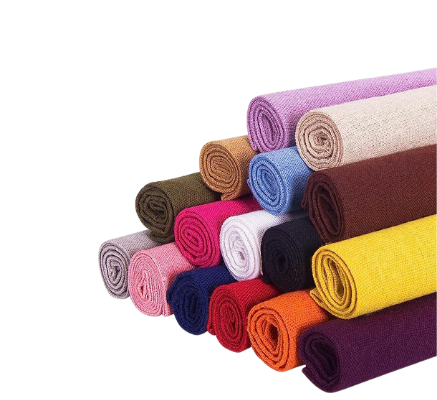Hospital bed sheets are not just a piece of cloth to cover the mattress. They play a crucial role in providing comfort and safety to patients. Bed sheets are in direct contact with the patient’s skin, so it is essential to choose the types of bed sheets used in hospital for their well-being. In this blog, we will discuss various types of hospital sheets available in the market, including fitted, flat, and drawsheet. We will also look at some special types of bed sheets like bariatric sheets and disposable linen. Additionally, we will delve into different materials used in making hospital bed sheets such as cotton, polyester, microfiber, and jersey. Lastly, we will provide you with a buying guide that outlines key factors to consider when purchasing hospital bed sheets like comfort, durability, sizes and shapes availability, thread count, and hospital sheets that are specially sized to fit the unique dimensions of a hospital bed. So read on to make an informed decision while selecting hospital bed sheets for your facility or home use.
Understanding the Importance of Hospital Bed Sheets
Hospital bed sheets are essential for patient comfort and safety in the healthcare industry. These high-quality hospital bedding sheets play a crucial role in preventing skin shearing and pressure ulcers, which can be extremely discomforting for patients. Choosing the right size sheets is important for maximum comfort and a proper fit on the hospital bed. It is crucial that hospital bed sheets, including hospital bedding, are durable and able to withstand frequent washing to maintain cleanliness and hygiene. Material considerations such as thread count and fabric type also impact the quality of hospital bed sheets. Higher thread counts are often preferred for their softness and durability. Hospital bed sheets should be able to meet the patient’s needs, whether it’s an undersized or oversized sheet. With these specifications in mind, healthcare professionals ensure that patients can rest comfortably on a bed covered with the right sheets.

The Role of Bed Sheets in Patient Comfort and Safety
Bed sheets play a crucial role in ensuring patient comfort and safety in healthcare settings. They serve as a barrier between the patient’s skin and the mattress, promoting cleanliness and reducing the risk of bedsores. By providing a soft and gentle surface, the right bed sheets contribute to a positive patient experience, offering comfort and promoting relaxation.
Properly fitted sheets are essential in preventing friction and skin shear, which can lead to pressure ulcers. Choosing the right size sheets ensures maximum comfort and a proper fit for the patient. Regular cleaning and replacement of bed sheets are necessary to maintain hygiene and prevent the accumulation of dust mites and allergens. The healthcare industry relies on hospital bed linens that can withstand frequent washing and maintain their durability. Additionally, for patients who spend a lot of time in bed, breathable and comfortable sheets are important to prevent bed sores. If your hospital uses pressure relief mattresses for patient’s upper body comfort, you’ll need fitted sheets that can accommodate this.
When purchasing hospital bed sheets, factors such as thread count and material considerations come into play. A higher thread count indicates better quality, while different materials like cotton, polyester, microfiber, and jersey offer varying levels of softness, durability, and ease of maintenance. Understanding the role of bed sheets in patient comfort and safety is crucial for providing optimal care and ensuring the well-being of patients in healthcare settings.
A Closer Look at Common Hospital Bed Sheet Types
Drawsheets, fitted sheets, and flat sheets are common types of bed sheets used in hospitals. Drawsheets, also known as bed sheets, are versatile and can be used for protection, positioning, or transferring patients. Fitted sheets, including the bedsheet closest to the mattress, have elasticized corners to ensure a snug fit and prevent slipping or bunching. Flat sheets are used as a top layer and can be easily tucked in or folded back for patient comfort. Each type of bed sheet, including the bedsheet, serves a specific purpose in enhancing patient comfort and safety. Understanding the different types of bed sheets, including the bedsheet, can help healthcare providers make informed choices for their patients.
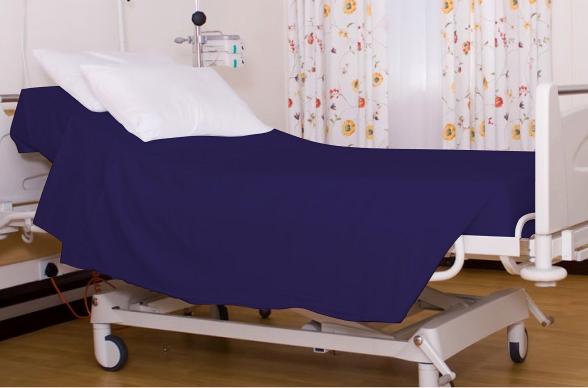
The Drawsheet
Drawsheets play a crucial role in ensuring patient comfort and safety in the healthcare industry. These sheets, including the Hospital Linens – Drawsheet, are typically placed on top of the fitted sheet, acting as an additional layer of protection. They serve multiple purposes such as absorbing moisture, preventing staining, and providing a barrier between the patient and the mattress. Drawsheets are particularly useful for patients who require frequent repositioning or may have incontinence issues, as they help to avoid pressure sores that develop from staying in one spot for too long. It is essential to choose the right drawsheet material, like polyester or microfiber, to ensure durability and easy maintenance. Additionally, selecting drawsheets with the right dimensions ensures proper coverage and fit, enhancing the patient’s comfort. Overall, drawsheets are an integral part of hospital bed linens, offering maximum comfort and cleanliness for patients in healthcare settings.
The Fitted Sheet
Fitted sheets play a crucial role in ensuring the comfort and safety of patients in hospitals. These sheets are designed with elasticized corners that securely fit over the corners of the mattress. This prevents slipping, bunching, or coming off during patient movement, providing maximum comfort and minimizing any potential discomfort or skin shearing. When selecting fitted sheets, material considerations such as thread count and fabric type should be taken into account. Higher thread count and softer fabrics like microfiber or bamboo can enhance the softness and durability of the sheets. Additionally, it is important to choose the right size sheets that match the specifications of the hospital bed. This ensures a comfortable and secure fit, allowing for easy removal and replacement during bed changes and efficient patient care. By selecting the right fitted sheets, healthcare providers can contribute to the overall well-being and cleanliness of their patients.
The Flat Sheet
Flat sheets in hospital bed linens play a crucial role in ensuring patient comfort and safety. These sheets are versatile and can be used as a top layer or folded back to provide extra insulation and maximize the patient’s comfort. Additionally, they can be easily tucked in for a neat appearance. Choosing the right material for flat sheets, such as percale or bamboo, enhances their softness and breathability. It is important to select properly sized flat sheets that cover the entire mattress surface and allow for easy bed-making. Since hospital bed sheets require frequent washing, it is essential for flat sheets, like the top sheet in Drive Medical’s Hospital Bed Bedding Set, to be easy to clean and maintain. By considering these factors, healthcare facilities can ensure that patients have the right sheets for maximum comfort and cleanliness.
Special Types of Hospital Bed Sheets
Special types of hospital bed sheets cater to specific patient requirements and enhance their comfort and safety. Bariatric sheets are designed to fit larger-sized beds and accommodate the needs of bariatric patients, while disposable linen offers convenience and hygiene benefits for situations requiring frequent change. Understanding these special bed sheet options helps healthcare providers meet the diverse needs of their patients, ensuring optimal care and facilitating efficient workflow for professionals. By selecting the appropriate bed sheet type, healthcare providers can prioritize patient comfort and safety while maintaining a seamless and efficient healthcare environment. While the average hospital bed is 36 inches wide (around the same width as a typical twin bed), some larger options are available, such as 40-inch and 50-inch designs. These wider hospital beds are convenient solutions for bariatric patients or others who need extra space.
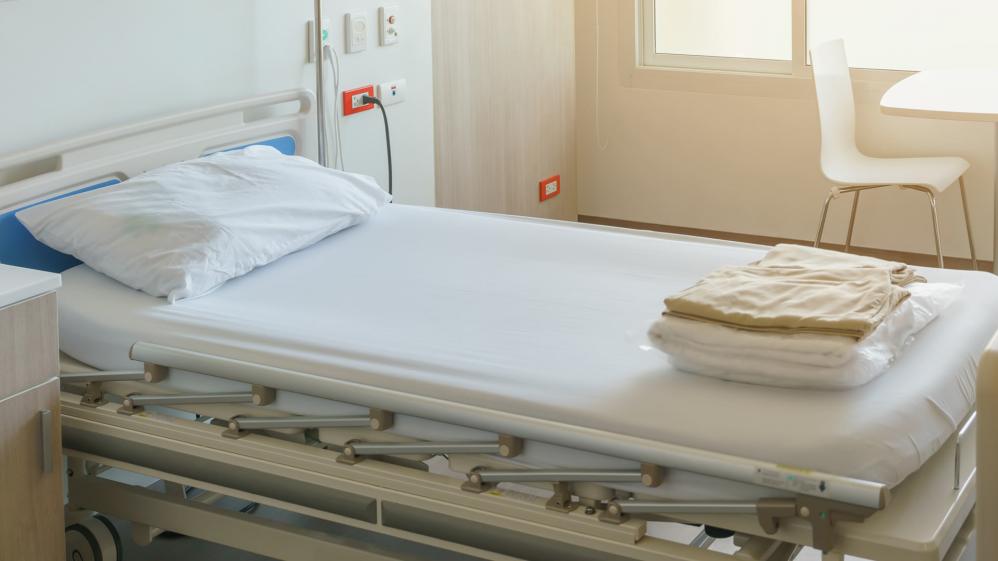
Bariatric Sheets
Bariatric sheets are designed to meet the specific needs of bariatric patients, offering both comfort and security. Made from durable and stretchable materials, these sheets are able to fit larger-sized beds perfectly. With a higher thread count, bariatric sheets ensure increased strength and durability. It is important to choose sheets with the right dimensions to ensure proper coverage and fit for bariatric beds. Additionally, bariatric sheets should be easy to remove and replace, facilitating efficient bed changes and patient care.
Disposable Linen
Disposable hospital linens provide a convenient and hygienic solution for healthcare settings. These single-use sheets can be easily discarded after each patient use, eliminating the need for laundering and reducing the risk of cross-contamination. Opting for disposable hospital linens made from soft and comfortable materials ensures patient satisfaction. Healthcare providers can benefit from using disposable hospital linens in situations that require frequent sheet changes, saving time and promoting a clean and sterile environment.
Material Considerations for Hospital Bed Sheets
Different material choices, such as polyester, microfiber, or bamboo, play a crucial role in determining the comfort and durability of hospital bed sheets. Higher thread count sheets offer a softer and more luxurious feel. It is important to consider the patient’s skin sensitivity and specific healthcare industry requirements when selecting the right material. The right choice of material can enhance the durability and longevity of bed sheets, reducing the need for frequent replacements. Understanding the benefits and drawbacks of different materials helps healthcare providers choose the most suitable bed sheets for their patients.
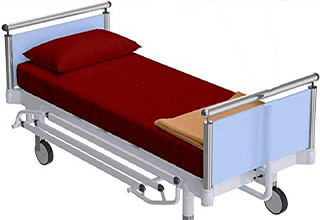
100 Polyester Hospital Bed Fitted Sheet
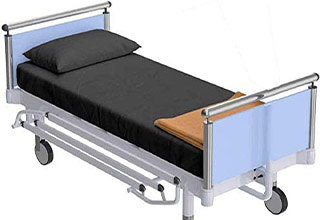
Soft and Comfy Hospital Bed Sheet
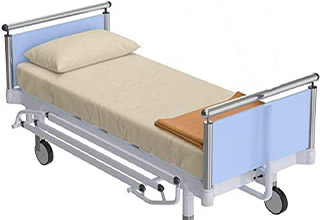
Standard Sheets for Hospital Bed
Cotton Sheets
Cotton sheets are a popular choice for hospital bed linens. They offer a soft and comfortable surface for patients, promoting their overall comfort and well-being. The breathability of cotton sheets is particularly beneficial for patients with sensitive skin or allergies, allowing for better air circulation and reducing the risk of irritation. Additionally, cotton sheets are known for their durability and ease of cleaning, making them a practical option for healthcare facilities. To ensure maximum comfort and durability, it’s recommended to look for cotton sheets with a higher thread count. These sheets not only feel softer but also have a longer lifespan. In some cases, pre-treated cotton sheets with antimicrobial agents can be considered to prevent the spread of infection in healthcare settings. By choosing the right sheets, healthcare providers can prioritize patient comfort and maintain high standards of cleanliness and hygiene.
Polyester Sheets
Polyester sheets are an excellent option for hospitals due to their budget-friendly nature and ease of maintenance. These sheets are highly durable, capable of withstanding repeated washing and use without losing their quality. Additionally, polyester sheets come in a wide variety of colors and designs, allowing healthcare facilities to choose options that suit their aesthetics. The hypoallergenic properties of polyester make them suitable for patients with allergies or sensitive skin. Furthermore, these sheets are resistant to wrinkles, minimizing the need for ironing and providing convenience in terms of care. Patients can experience maximum comfort with polyester sheets, ensuring a pleasant stay during their time in the hospital. With their affordability, durability, and low-maintenance nature, polyester sheets are a practical choice for the healthcare industry.
Microfiber Sheets
Microfiber sheets offer a soft and silky texture, providing ultimate comfort for patients. These sheets are highly absorbent and quick-drying, ensuring cleanliness in the hospital setting. With their durability, microfiber sheets can withstand frequent washing and use. They come in various colors and sizes, catering to the needs of different hospital beds. Moreover, microfiber sheets are hypoallergenic and resistant to dust mites, making them an excellent choice for patients with allergies or asthma. Enhance patient comfort with these versatile and practical hospital bed sheets.
Jersey Sheets
Jersey sheets, made from a knit fabric, offer a soft and stretchy feel. These sheets are highly breathable, making them an excellent choice for hospitals where patients can easily overheat. Durable and capable of withstanding frequent washing, jersey sheets are available in a variety of colors and patterns to match any hospital decor. Some patients may find comfort and coziness in jersey sheets, making them a preferred option. Invest in these versatile and comfortable sheets for a soothing experience.
Buying Guide: What to Consider When Purchasing Hospital Bed Sheets
When purchasing hospital bed sheets, there are several factors to consider. First, the material of the sheets should be durable and breathable, such as cotton or a cotton blend. The size of the sheets is also important to ensure a proper fit on the hospital bed, avoiding discomfort or accidents. Choosing lighter colors that can easily be sanitized and don’t show stains easily is also recommended. Additionally, considering a higher thread count can provide added comfort and durability, helping to prevent skin shear and bed sores. Finally, it’s essential to factor in your budget and the expected lifespan of the sheets to determine the most cost-effective option.
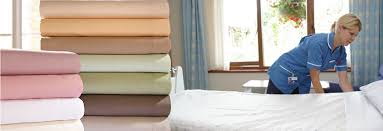
Comfort and Durability
When it comes to patient comfort, selecting the right hospital bed sheet is crucial. There are different types available, such as cotton, polyester, and microfiber, each with its own benefits. Factors like durability, breathability, and ease of maintenance should be considered when choosing bed sheets for hospitals. High-quality bed sheets not only reduce the risk of infection but also enhance patient satisfaction. Proper care and maintenance can increase their lifespan and maintain their quality.
Variety of Sizes and Shapes
When choosing bed sheets for a hospital bed, it’s important to consider the variety of sizes and shapes available. Hospital bed sheets come in different types, such as fitted, flat, draw or contour sheets. Fitted sheets provide a snug fit to the mattress, preventing slipping. On the other hand, flat sheets are versatile and easy to change. Draw sheets are used for patient positioning, while contour sheets are designed for mattresses with raised edges. Consider the size and shape of the hospital bed when selecting the appropriate bed sheets, including pillowcases. Additionally, look for sheets made from durable, breathable materials that can withstand frequent washing and use in a healthcare setting.
Thread Count
Thread count refers to the number of threads woven into a square inch of fabric. When it comes to hospital bed sheets, thread count matters as it directly affects the quality and durability of the bedding. Different types of hospital bed sheets have varying thread counts. Higher thread count sheets are known to improve patient comfort and overall hospital experience, as they provide a softer and smoother texture against the patient’s skin. It is important to select the right thread count based on budget and specific patient needs.
Easy Maintenance and Cleaning
When it comes to easy maintenance and cleaning of hospital bed sheets, there are a few key factors to consider. First, the material of the bed sheets plays a crucial role. Opt for materials like cotton or polyester, as they are known for their easy cleaning properties. Additionally, look for bed sheets that are machine washable and can withstand frequent washing without losing quality. Consider choosing bed sheets with wrinkle-resistant properties to minimize time spent on ironing. It’s also important to select bed sheets with colorfast properties to prevent fading after multiple washes. Lastly, prioritize bed sheets that are hypoallergenic and resistant to bacteria and contaminants for improved hygiene. By taking these factors into account, you can ensure that your hospital bed sheets are not only comfortable but also easy to maintain and clean.
Conclusion
When it comes to hospital bed sheets, prioritizing patient comfort and safety is crucial. Understanding the different types of bed sheets available can help you make the right choice for your healthcare facility. Drawsheets, fitted sheets, and flat sheets are commonly used in hospitals, each serving a specific purpose. Additionally, specialized bed sheets like bariatric sheets and disposable linen provide unique benefits. Material considerations such as cotton, polyester, microfiber, and jersey offer different levels of comfort and durability. When purchasing hospital bed sheets, factors like comfort, durability, variety of sizes, thread count, and ease of maintenance should be taken into account. If you’re looking to buy hospital bed sheets, get quotes from different suppliers to find the best fit for your facility’s needs.

